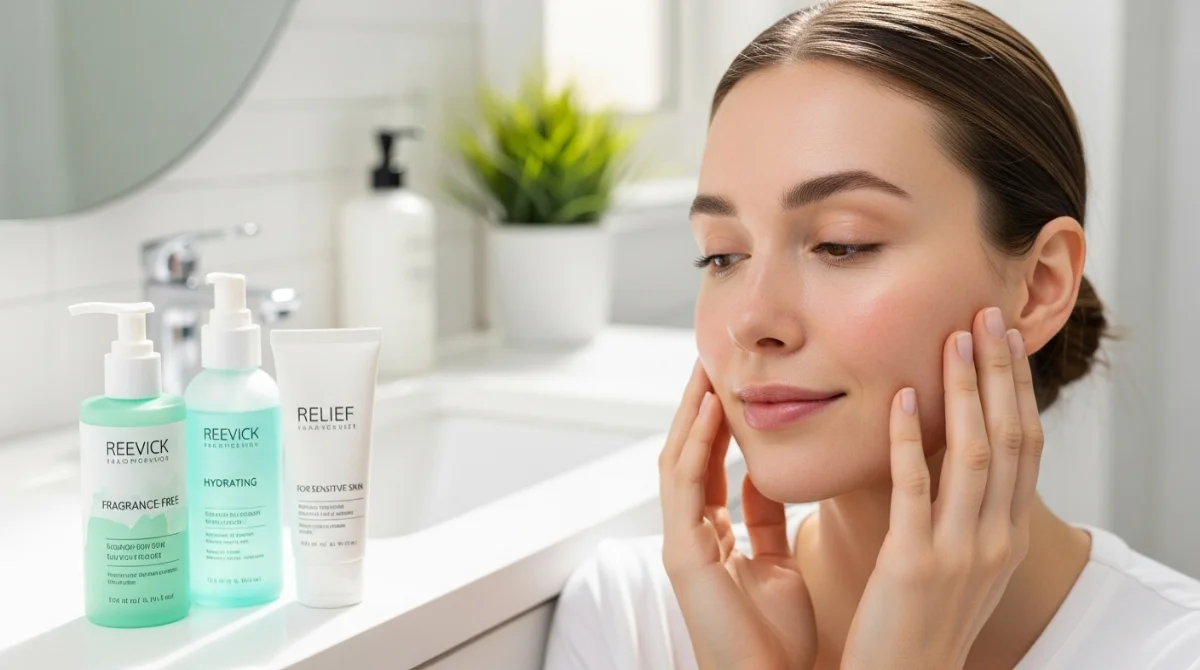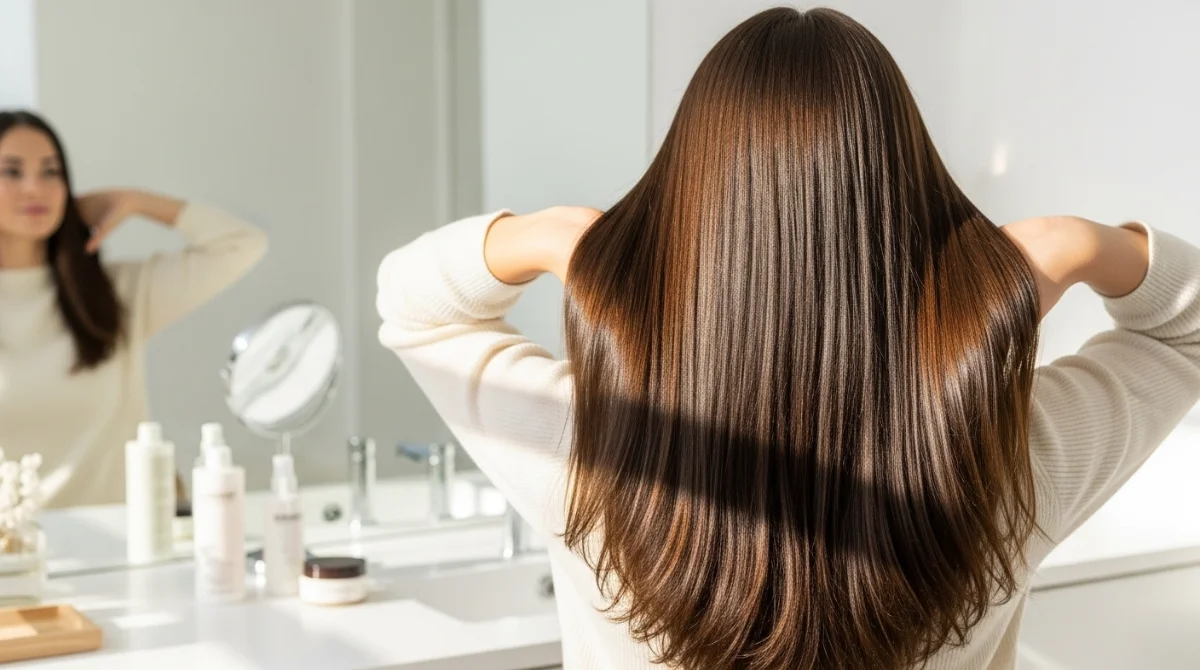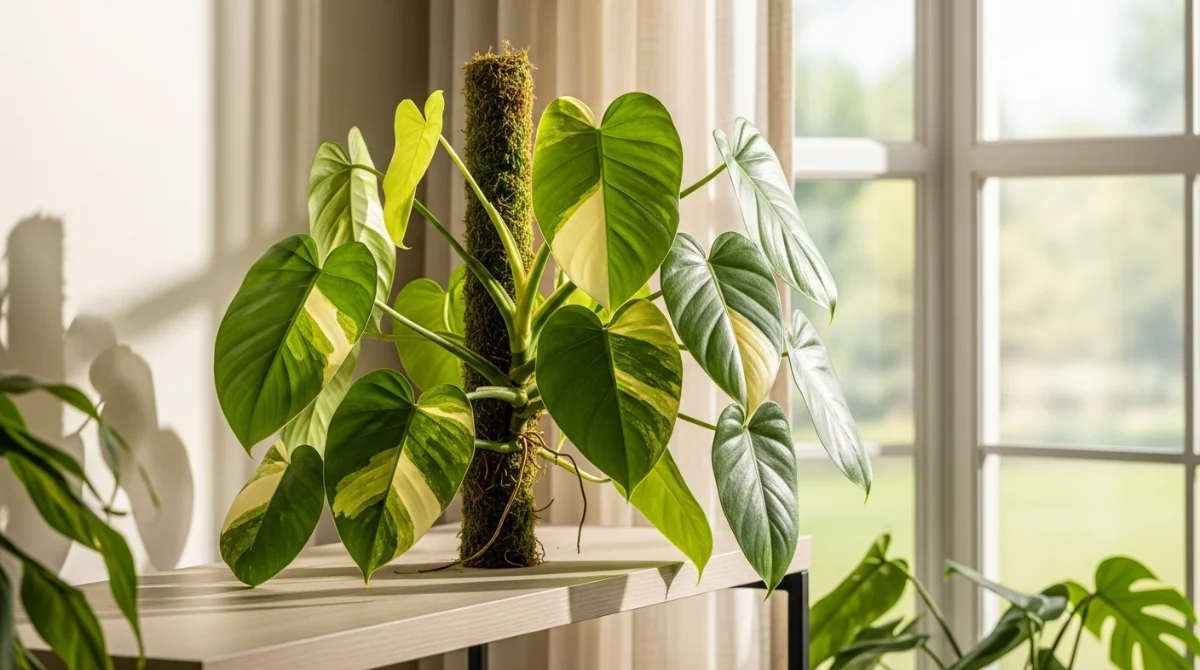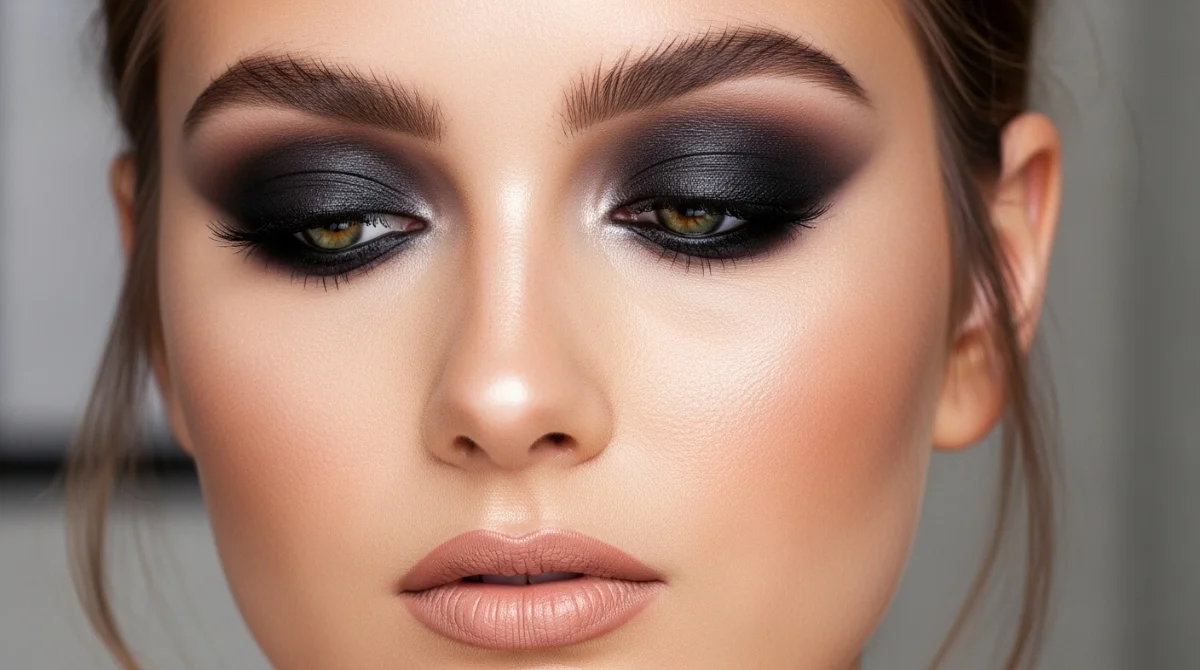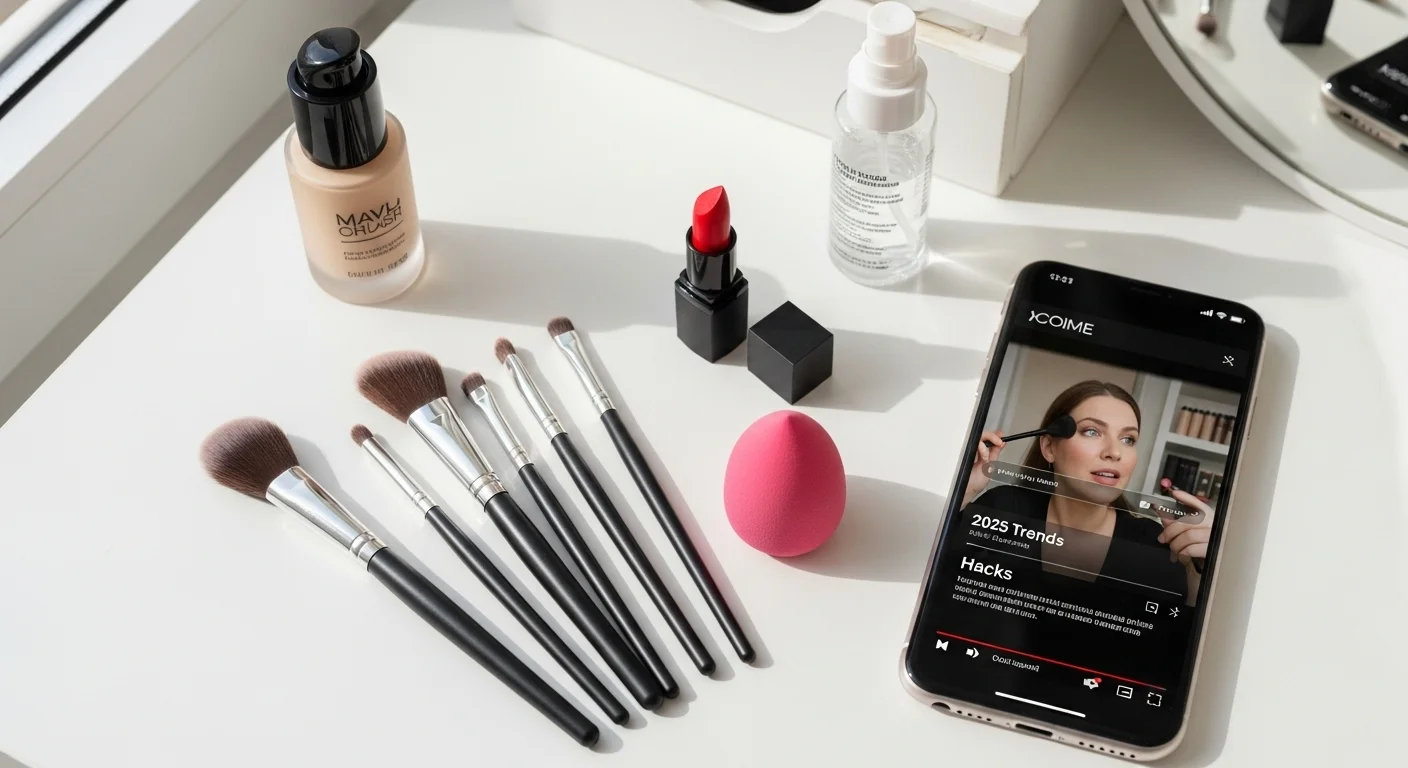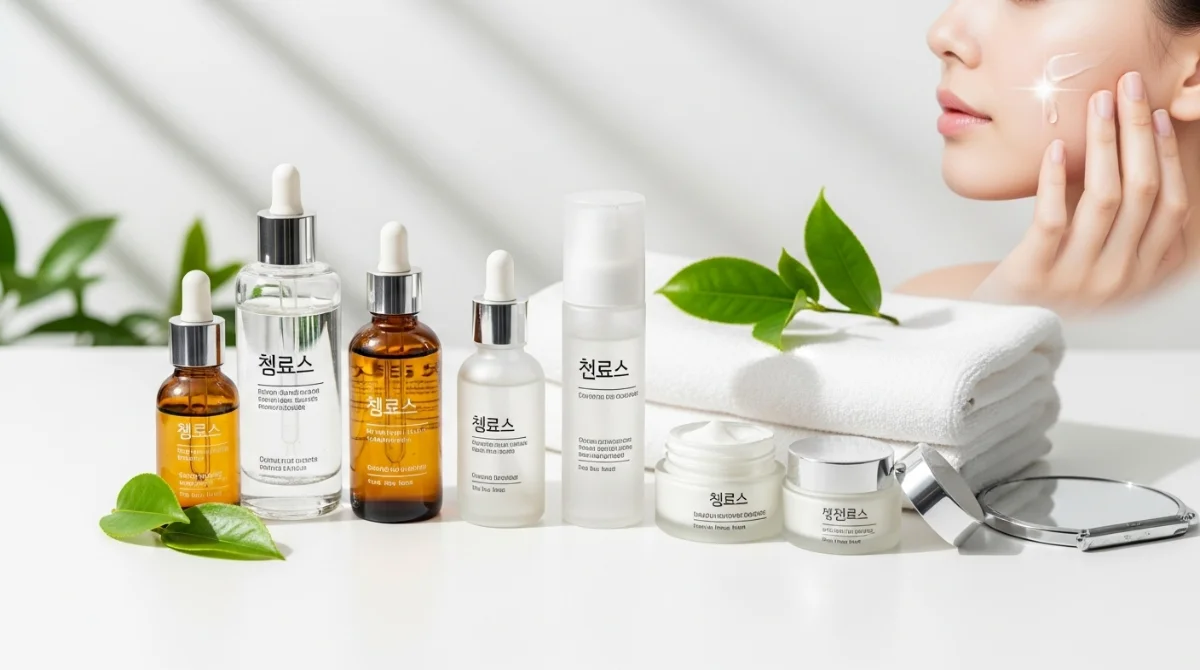Living with rosacea can feel frustrating, especially when your skin reacts easily. The right skincare routine can help soothe redness and restore calm quickly. Good skincare for rosacea focuses on gentle, hydrating, and non-irritating ingredients daily. Let’s explore how to create a dermatologist-approved routine that truly works.
What Makes Good Skincare for Rosacea?
Rosacea-prone skin is extremely delicate and reacts to many triggers easily. Good skincare for rosacea focuses on calming inflammation and repairing your skin barrier. Using mild, fragrance-free products helps reduce redness and flare-ups over time. A simple, consistent routine is the best approach to managing sensitive skin.
Why Skin Barrier Repair Matters
Your skin barrier keeps hydration in and protects against environmental damage. When it’s weakened, rosacea symptoms like redness and dryness become worse quickly. Repairing the barrier helps your skin stay calm, balanced, and resilient daily. Ingredients like ceramides, glycerin, and hyaluronic acid make a visible difference fast.
Ingredients Dermatologists Recommend
Choosing the right ingredients can completely transform rosacea-prone skin for better comfort. Dermatologists recommend formulas that are hydrating, soothing, and free of fragrance always. Look for ceramides, niacinamide, and azelaic acid in your daily products. These ingredients calm redness, strengthen your skin, and prevent flare-ups effectively.
| Ingredient | Benefit | Notes / Use Frequency |
|---|---|---|
| Ceramides | Strengthen barrier and prevent moisture loss | Daily in moisturizers |
| Niacinamide | Calms redness and improves barrier function | 2–5% concentration daily |
| Azelaic Acid | Reduces redness, bumps, and inflammation | 2–3 times weekly |
| Colloidal Oatmeal | Soothes irritation and dryness | Use in masks as needed |
| Green Tea Extract | Fights inflammation and provides antioxidants | Daily in serums |
| Hyaluronic Acid | Boosts deep hydration and plumps skin | Daily use recommended |
What to Avoid to Prevent Flare-Ups
Certain ingredients can irritate rosacea-prone skin and cause sudden redness. Avoid alcohol, fragrance, menthol, camphor, and eucalyptus in all skincare products. These substances strip moisture and increase your skin’s sensitivity over time. Always choose mild, non-foaming cleansers and fragrance-free moisturizers for safety.
The Dermatologist-Backed Rosacea Skincare Routine
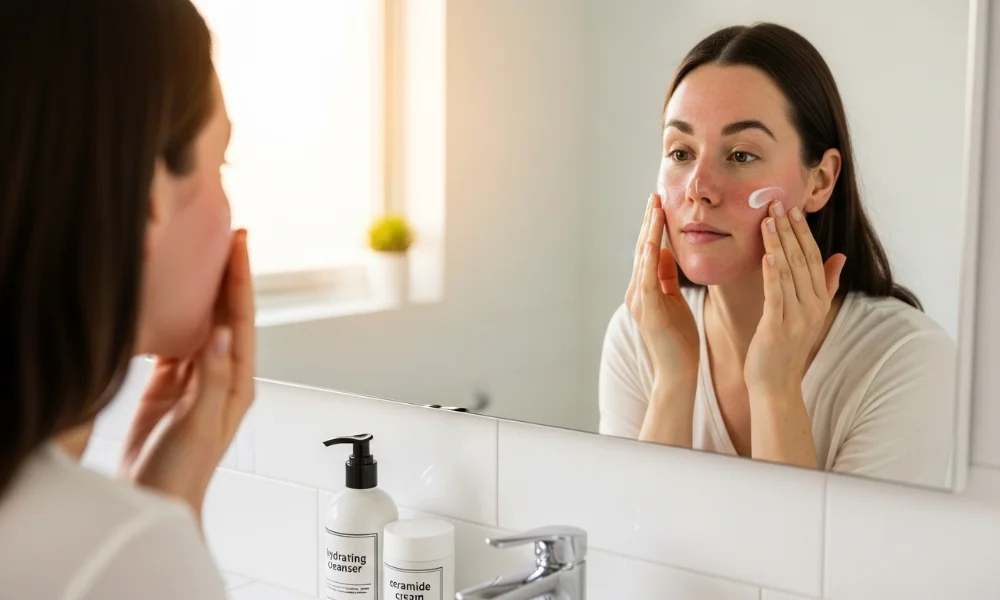
A simple, consistent skincare routine helps manage rosacea and prevent flare-ups. You don’t need many products, only gentle and effective essentials daily. Use lightweight, non-irritating products that focus on hydration and barrier repair. Below is a dermatologist-approved routine that works for both morning and night.
Morning (AM)
Start your morning by cleansing with a gentle non-foaming cleanser daily. Try CeraVe Hydrating Cleanser or La Roche-Posay Toleriane Hydrating Cleanser for best results. After cleansing, apply a lightweight moisturizer rich in ceramides and niacinamide. Finish with a mineral sunscreen SPF 30–50 made with zinc or titanium dioxide.
Mineral Sunscreen Selection Tips:
-
Choose fragrance-free formulas labeled for sensitive and rosacea-prone skin.
-
Use tinted versions that help neutralize redness naturally and evenly.
-
Reapply sunscreen every two hours when exposed to sunlight outside.
Evening (PM)
In the evening, remove makeup with Bioderma Sensibio H2O Micellar Water gently. Follow with your gentle cleanser again to remove leftover dirt and residue. Apply azelaic acid or niacinamide serum if your skin tolerates treatments well. End with a soothing moisturizer like Avene Tolerance Control Cream for hydration overnight.
Learn how to control shine and maintain clear skin with our complete Oily Skin Care Routine: Morning and Night Steps guide
Weekly / As-Needed Add-Ons
Occasionally, your skin might need extra calming care to stay balanced. Use a colloidal oatmeal mask or green tea compress once weekly. These natural ingredients help soothe inflammation and reduce redness gently. Avoid scrubs or peels because they worsen sensitivity and damage your skin barrier.
Smart Product Shopping for Rosacea-Friendly Skin Care
Finding rosacea-safe skincare products can feel overwhelming with endless options available. Focus on choosing products labeled as fragrance-free, non-comedogenic, and for sensitive skin. These labels indicate that formulas are gentle and less likely to cause irritation. Always check ingredient lists before buying new products to stay safe.
Look for Labels & Certifications
Certain labels and seals can guide you toward the safest rosacea-friendly products. The National Rosacea Society Seal of Acceptance is a trusted sign of safety. It ensures the product has been tested for gentleness on sensitive skin. Always choose dermatologist-tested and hypoallergenic items for daily use.
| Label / Seal | Why It Helps |
|---|---|
| Fragrance-Free | Minimizes irritation and sensitivity reactions |
| Non-Comedogenic | Prevents clogged pores and rosacea-related breakouts |
| Hypoallergenic | Reduces risk of allergic responses significantly |
| NRS Seal of Acceptance | Confirms safety for rosacea-prone skin |
Patch Test & Introduce One Product at a Time
Testing new products is essential when you have sensitive, rosacea-prone skin. Apply a small amount on your jawline and wait forty-eight hours patiently. If there’s no redness or stinging, it’s safe to use regularly. Introduce one new product at a time to track reactions easily.
Sunscreen for Rosacea: Non-Negotiable Protection
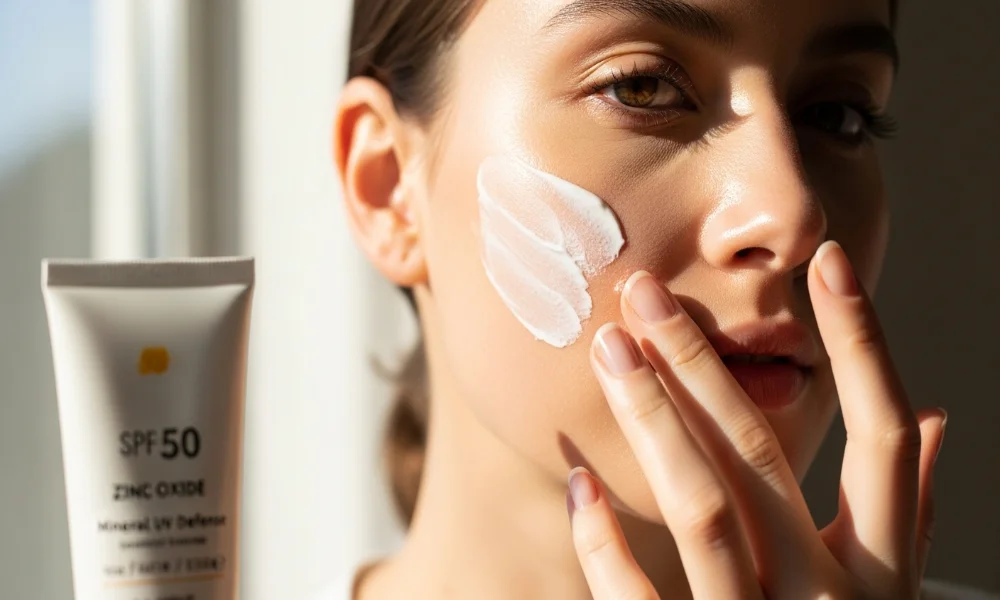
Sun exposure is a top trigger that worsens rosacea and causes redness. Protecting your skin from UV rays is vital for managing this condition. Always wear broad-spectrum mineral sunscreen daily, even during cloudy weather conditions. Consistent sunscreen use prevents new flare-ups and long-term skin damage effectively.
Discover the secrets to glowing skin by following our detailed Korean Face Care Routine guide for every skin type.
Why Mineral Filters (Zinc / Titanium) Are Better Tolerated
Mineral sunscreens with zinc oxide and titanium dioxide reflect UV rays gently. They sit on the skin’s surface instead of absorbing, reducing irritation chances greatly. These filters also help control heat-induced redness during sunny or humid days. Try EltaMD UV Clear SPF 46 or La Roche-Posay Anthelios Mineral SPF 50.
Makeup & Redness Camouflage (Without Irritation)
Makeup can help you feel confident while managing rosacea daily. Choose gentle, breathable formulas designed specifically for sensitive and reactive skin types. Avoid heavy, alcohol-based, or fragranced products that worsen irritation and redness. Always remove your makeup thoroughly to prevent flare-ups or blocked pores overnight.
Green Color-Correcting Primers & Silicone-Based Options
A green-tinted primer helps neutralize redness before applying foundation perfectly. Silicone-based primers act like a barrier, protecting skin from environmental irritants daily. Try Eucerin Anti-Redness Concealing Day Cream or Smashbox Correcting Primer for smooth coverage. Always cleanse gently with micellar water to remove makeup without irritation.
Also Read Our Guide On ; Easy Makeup Ideas: Which Look Will You Try Today?
Triggers & Lifestyle That Influence Flare-Ups

Managing rosacea goes beyond skincare because lifestyle plays a major role too. Triggers like heat, spicy foods, and alcohol can worsen redness significantly. Identifying these triggers helps you take control of your skin’s behavior daily. A mindful lifestyle combined with gentle skincare delivers long-lasting results effectively.
Heat, Spicy Foods, Alcohol, UV, Stress
Tracking triggers helps you discover patterns that cause rosacea flare-ups quickly. Record your meals, activities, and skincare changes each day for awareness. Over time, this diary shows which habits worsen your redness the most. Making small adjustments reduces flare frequency and improves your skin’s comfort.
When to See a Dermatologist
If you experience persistent redness or bumps, consult a dermatologist promptly. They can prescribe azelaic acid, ivermectin, or metronidazole creams for control. In advanced cases, laser therapy can reduce visible blood vessels safely. Professional help ensures your rosacea is treated effectively and monitored correctly.
Conclusion
Rosacea requires patience, consistency, and a simple, soothing skincare routine daily. Use fragrance-free, hydrating products to calm irritation and redness effectively. Never skip sunscreen because UV exposure worsens rosacea faster than anything else. Identify triggers, protect your barrier, and consult a dermatologist for long-term management.
Good skincare for rosacea isn’t about perfection; it’s about steady progress daily. With gentle ingredients, consistent sunscreen use, and a mindful lifestyle, improvement follows. Keep your routine simple, patch-test everything, and listen to your skin’s needs always. Over time, your skin will become calmer, clearer, and more confident naturally.
For a more detailed approach to achieving radiant skin, check out our full Body Care Routine: Step-by-Step Guide for Glowing Skin and transform your daily skincare habits.

